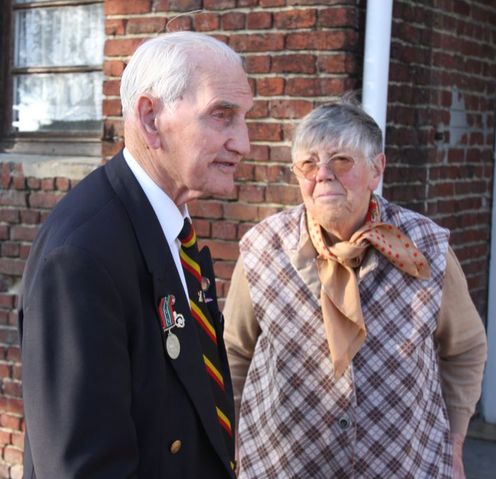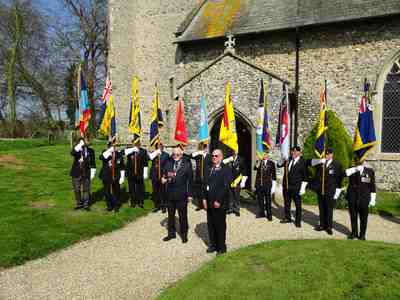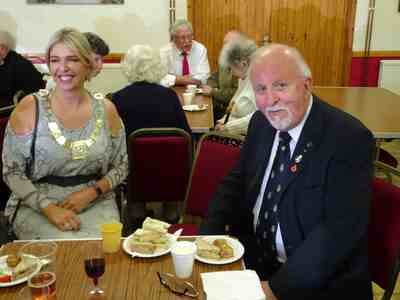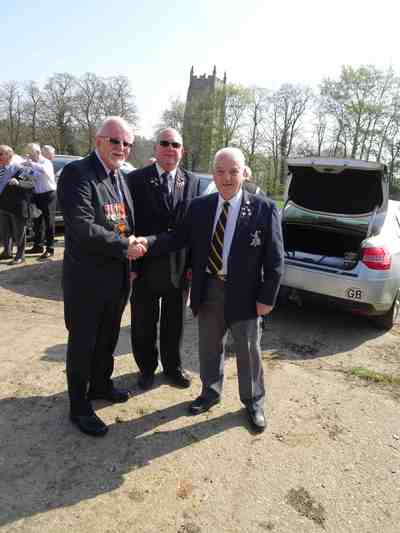Arthur Brough
ARTHUR Brough was born in 1919 and moved with his family to Great Yarmouth when he was nine.
He joined the Royal Norfolk Regiment in January, 1938, and saw active service in Gibralter. Private Brough was one of many who helped to hold back German troops between Le Paradis and Le Cornet Malo so that over 300,000 could be evacuated at Dunkirk.
Arthur was part of a mortar team until he was hit by shrapnel in the leg. While many of his comrades were killed and many others executed at Le Paradis, he was taken a prisoner and spent the rest of the war in Polish camps before being liberated in June, 1945.
On returning to Norfolk he found his family living in Norwich and was given the news that his brother Sonny had been killed in France.
Arthur subsequently returned to Le Paradis on a number of occasions. His wife Vera's ashes are interred in the churchyard at Le Paradis.
Arthur passed away in a nursing home in Norwich in December, 2017, at the age of 98. A memorial service is planned and Arthur's ashes are likely to be placed close to those of Vera.
He joined the Royal Norfolk Regiment in January, 1938, and saw active service in Gibralter. Private Brough was one of many who helped to hold back German troops between Le Paradis and Le Cornet Malo so that over 300,000 could be evacuated at Dunkirk.
Arthur was part of a mortar team until he was hit by shrapnel in the leg. While many of his comrades were killed and many others executed at Le Paradis, he was taken a prisoner and spent the rest of the war in Polish camps before being liberated in June, 1945.
On returning to Norfolk he found his family living in Norwich and was given the news that his brother Sonny had been killed in France.
Arthur subsequently returned to Le Paradis on a number of occasions. His wife Vera's ashes are interred in the churchyard at Le Paradis.
Arthur passed away in a nursing home in Norwich in December, 2017, at the age of 98. A memorial service is planned and Arthur's ashes are likely to be placed close to those of Vera.
Top (left to right) - Arthur with Dennis O'Callaghan; Arthur with comrade Jim Lane, Dennis O'Callaghan and Dennis' son Stuart; Arthur outside the massacre site at Le Paradis and Arthur at the Dyle Line.
Bottom (left to right) - Arthur with Jim Lane; Arthur with John Head, Dennis O'Callaghan and Jim Lane; Arthur with Jim Lane and Dennis O'Callaghan and a memorial to Arthur's wife Vera.
The following is a first hand account by Arthur Brough of fighting in the area and the desperate attempts to stem the advancing German tide. The following is taken from the Imperial War Museum Sound Archives Accession No. 16972 - interview with Arthur Brough.
“Lots of tanks and heavy gunfire; we were putting as much stuff down the mortar as we could to get rid of our ammunition. We were trying to repulse them but we knew it wasn’t a lot of good because there were so many there…..The mortar must have been red-hot. Anything they could get hold of they were putting down the mortar. There were only about three of us left by that time and Platoon Sergeant Major Ireland. He got shot.
We resorted to rifle fire which was absolutely stupid but I suppose it was instinct to try and do your job. Then we saw it was absolutely hopeless. We chucked the bolts out of the rifle. Why you do these things don’t ask me why, but I think it must be instinct. That’s what you’ve been taught to do, immobilise your rifle, take the bolt out. Then we scattered. Tanks by the hundred were coming up. We just ran for it. What else can you do when you see tanks coming for you?”
Brough, along with Johnny Cockerel, suffered leg wounds when hit by fragments from an exploding shell. For them, stopped in their tracks and sitting in a ditch, the battle was over and they were taken prisoner.
Bottom (left to right) - Arthur with Jim Lane; Arthur with John Head, Dennis O'Callaghan and Jim Lane; Arthur with Jim Lane and Dennis O'Callaghan and a memorial to Arthur's wife Vera.
The following is a first hand account by Arthur Brough of fighting in the area and the desperate attempts to stem the advancing German tide. The following is taken from the Imperial War Museum Sound Archives Accession No. 16972 - interview with Arthur Brough.
“Lots of tanks and heavy gunfire; we were putting as much stuff down the mortar as we could to get rid of our ammunition. We were trying to repulse them but we knew it wasn’t a lot of good because there were so many there…..The mortar must have been red-hot. Anything they could get hold of they were putting down the mortar. There were only about three of us left by that time and Platoon Sergeant Major Ireland. He got shot.
We resorted to rifle fire which was absolutely stupid but I suppose it was instinct to try and do your job. Then we saw it was absolutely hopeless. We chucked the bolts out of the rifle. Why you do these things don’t ask me why, but I think it must be instinct. That’s what you’ve been taught to do, immobilise your rifle, take the bolt out. Then we scattered. Tanks by the hundred were coming up. We just ran for it. What else can you do when you see tanks coming for you?”
Brough, along with Johnny Cockerel, suffered leg wounds when hit by fragments from an exploding shell. For them, stopped in their tracks and sitting in a ditch, the battle was over and they were taken prisoner.
John Head recalls a prized meeting with Arthur Brough:
Arthur, even in his early nineties, had a habit of walking from his home into Norwich. If you wanted to see him it was a fair bet that he would be in Jarrold’s Department store between 9.30 am and 11.30 am where he would either be having his nails manicured or enjoying a cup of coffee.
I once met up with Arthur in Jarrold’s and shared a cup of coffee with him. He had just been to Age Concern to see if they could assist him with his travel insurance for, at his advanced years, he thought the insurance market was being unreasonable in respect of their terms and conditions they were applying to him.
During our conversation Arthur reached for a plastic carrier bag he had with him. It contained a photograph which I instantly recognised as Major Lisle Ryder, which was also confirmed by Arthur. He looked at me with feeling in his eyes and stated: “When I walk into Norwich, this carrier bag (containing the photograph) always goes with me”.
I asked Arthur where he lived and he handed me his’ business card’ which on the front featured a photograph of him wearing his medals and Royal Norfolk tie with his wife Vera. On the reverse was his address from which I could calculate how far his walk was into Norwich (approximately a mile and a half) which he did on a regular basis.
This small incident in the company of Arthur further demonstrated his pride not only in a lifelong remembrance of those who were lost in the Le Paradis atrocity, many of whom were his personal friends, but also of being under the command of Major Lisle Ryder.
Arthur, even in his early nineties, had a habit of walking from his home into Norwich. If you wanted to see him it was a fair bet that he would be in Jarrold’s Department store between 9.30 am and 11.30 am where he would either be having his nails manicured or enjoying a cup of coffee.
I once met up with Arthur in Jarrold’s and shared a cup of coffee with him. He had just been to Age Concern to see if they could assist him with his travel insurance for, at his advanced years, he thought the insurance market was being unreasonable in respect of their terms and conditions they were applying to him.
During our conversation Arthur reached for a plastic carrier bag he had with him. It contained a photograph which I instantly recognised as Major Lisle Ryder, which was also confirmed by Arthur. He looked at me with feeling in his eyes and stated: “When I walk into Norwich, this carrier bag (containing the photograph) always goes with me”.
I asked Arthur where he lived and he handed me his’ business card’ which on the front featured a photograph of him wearing his medals and Royal Norfolk tie with his wife Vera. On the reverse was his address from which I could calculate how far his walk was into Norwich (approximately a mile and a half) which he did on a regular basis.
This small incident in the company of Arthur further demonstrated his pride not only in a lifelong remembrance of those who were lost in the Le Paradis atrocity, many of whom were his personal friends, but also of being under the command of Major Lisle Ryder.
Memorial Service
A service of thanksgiving for the life of Arthur Brough was held at St Andrew's Church, Honingham, on April 22nd, 2018. The photographs below were taking at the service and at a reception afterwards. Photographs courtesy of John Head.























